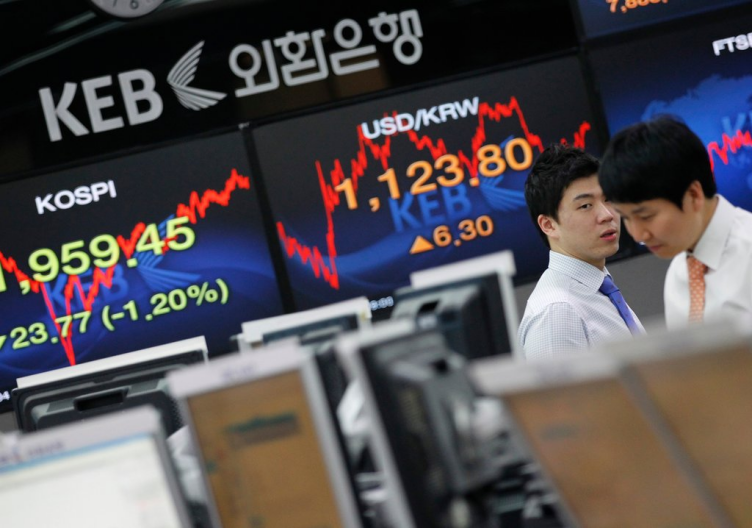On February 1, related data showed that Asian manufacturing activity improved significantly in January this year, with stronger demand in key markets. Manufacturing production and export sales rose across most of Asia at the start of the year, with South Korea in particular showing an improvement in the economic malaise gripping the country, according to S&P's manufacturing purchasing managers' index released on the 1 February.
Looking back at 2023, the South Korean economy can be said to be in a downturn all the way, and the economic growth rate has slowed down significantly. Gross domestic product data for 2023, released by the Bank of Korea on Jan. 25, showed growth of just 1.4 percent compared with the previous year, the first time in 25 years that the growth rate was lower than that of Japan, exposing structural problems such as the sluggish semiconductor industry in the country. The Bank of Korea is also pessimistic that the country will enter a period of low growth due to the low number of children, the aging population, and declining productivity and competitiveness, which will make it difficult to increase the potential growth rate.
However, just after the first month of 2024, the Korean economy has bucked the market. This phenomenon is attributed to the increase in Korean exports. According to South Korea's Ministry of Trade, Industry and Energy, the country's exports rose 18.0 percent year on year to $54.69 billion in January, the fourth straight month of growth and the biggest percentage increase since May 2022. By contrast, exports rose just 5.0 per cent in December from a year earlier. Among them, the biggest driving force for the export rebound is memory chips. South Korea leads the world in chip production, so strong global demand for it bodes well for the wider economy. Specifically, South Korea's January chip exports rose 56.2% year-on-year, the largest increase since December 2017, the third consecutive month of growth, leading the overall export recovery.
Not only are South Korea's exports doing well, but other industries are also doing well. Automotive exports rose 24.8% for the 19th consecutive month to $6.2 billion, the highest level in history for the same month. In addition, exports of machinery, household appliances and display products increased by 14.5 percent, 14.2 percent and 2.1 percent, respectively. By destination, shipments to China rose 16.1 per cent, ending 19 consecutive months of decline. Exports to the United States rose 26.9 percent, the sixth consecutive month of growth, exports to the European Union rose 5.2 percent, South Korea's data to the world's largest economies are all growing.
South Korea's exports have long been a leading barometer of global trade, providing an early glimpse into the state of global demand. The timing and pace of a recovery in South Korea's exports this year will depend on a range of factors, including consumer demand in major countries from the United States to China, and the direction of global interest rates. If South Korea wants to maintain growth throughout the year, these factors are the main problems that South Korea needs to solve, including domestic conflicts such as young people's employment, will be an important part of its ability to maintain economic growth throughout the year.
At the same time, what is more worrying is the short board of South Korea's semiconductor, which restricts South Korea's economic development to a certain extent. One is the lack of supply of semiconductor talent. According to the Korea Semiconductor Industry Association, the Korean semiconductor industry is expected to face a shortage of at least 30,000 workers in the next 10 years. During this period, approximately 1,500 to 1,600 new jobs will be created in the chip industry each year. However, the number of new graduates of semiconductor or semiconducter-related majors in South Korea is only 650 per year, less than half of that number. Second, materials, parts and equipment are heavily dependent on imports. Semiconductor manufacturers such as Samsung Electronics and SK have strict requirements on materials, components and equipment in order to maintain their international competitiveness, as they prefer overseas suppliers with proven technologies. For the development of a country's semiconductor industry, the low self-sufficiency rate of related materials, parts and equipment is undoubtedly a major blow. Third, the market share of system semiconductors is low. In recent years, the system semiconductor market has reached twice the size of the memory semiconductor market, but Korea's system semiconductor market share has been hovering around 3% for the past 10 years.
South Korea's economy, which turned to growth this year after a year of sluggishness, is expected to improve further this year, becoming a major driver of global growth. But the timing and speed of the recovery will depend on a variety of factors, including consumer demand in major countries such as the United States and China, and global interest rate trends. If South Korea is not properly resolved in a number of issues, including geopolitics, it is likely to continue to decline.


























